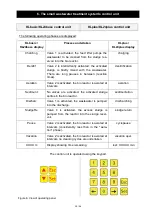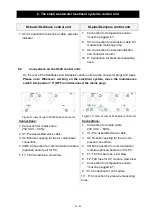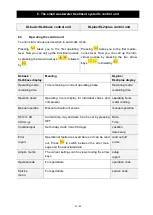
4. Function of the SBR system
11 / 54
4.
Function of the SBR system
The Klaro Easy
is a fully biological small wastewater treatment system, which functions on the
principle of the SBR process (aeration system in retention process). The system basically com-
prises 2 stages: A sludge reservoir with integrated upstream buffer and activated sludge stage
in closed retention mode (SBR reactor).
The upstream sludge reservoir with integrated buffer fulfils the following functions:
storage of primary and secondary sludge
retention of deposited materials and floating solids
storage of supply water
compensation of fluctuations in the wastewater supply related to volume and concentration.
The wastewater treatment system is operated using a microprocessor control, which controls
the air compressor and air distribution for the various lifters via solenoid valves / stepped mo-
tors.
Systems for breaking down the organic matter present in the water (removal of
4.1
carbon: discharge class C)
The process is a series of 5 steps undertaken in turn and repeated several times a day (usu-
ally 4 times).
Step 1:
Feed
The raw wastewater held in the sludge reservoir is fed to the SBR reactor via an air lift
pump. This is arranged such that only water free of solids is pumped. The special design of
the lifter guarantees a minimum water level in the sludge reservoir.
Step 2:
Aeration
In this step, the wastewater is aerated and mixed. Membrane pipe or plate aerators fitted on
the base of the chamber aerate the wastewater.
The system's aeration equipment is supplied with ambient air by a control cabinet installed
separately. An air compressor produces the compressed air needed. Aeration usually takes
place intermittently
with two simultaneous outcomes:
the microorganisms in the activated sludge are supplied with oxygen, which is needed
for their metabolism and therefore for the pollutants to be broken down
there is intensive contact between the wastewater and bacteria.




































